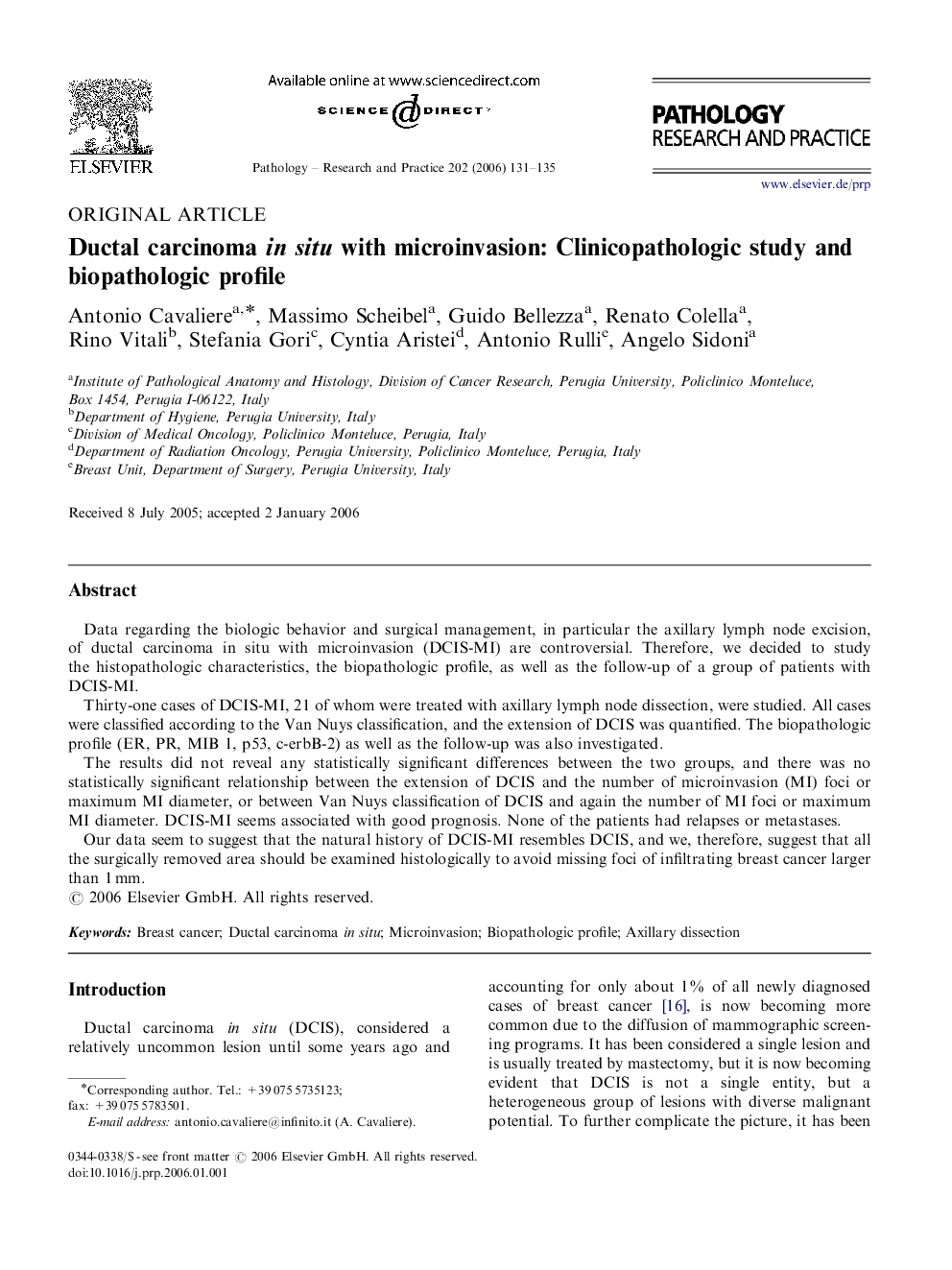| Article ID | Journal | Published Year | Pages | File Type |
|---|---|---|---|---|
| 2156726 | Pathology - Research and Practice | 2006 | 5 Pages |
Data regarding the biologic behavior and surgical management, in particular the axillary lymph node excision, of ductal carcinoma in situ with microinvasion (DCIS-MI) are controversial. Therefore, we decided to study the histopathologic characteristics, the biopathologic profile, as well as the follow-up of a group of patients with DCIS-MI.Thirty-one cases of DCIS-MI, 21 of whom were treated with axillary lymph node dissection, were studied. All cases were classified according to the Van Nuys classification, and the extension of DCIS was quantified. The biopathologic profile (ER, PR, MIB 1, p53, c-erbB-2) as well as the follow-up was also investigated.The results did not reveal any statistically significant differences between the two groups, and there was no statistically significant relationship between the extension of DCIS and the number of microinvasion (MI) foci or maximum MI diameter, or between Van Nuys classification of DCIS and again the number of MI foci or maximum MI diameter. DCIS-MI seems associated with good prognosis. None of the patients had relapses or metastases.Our data seem to suggest that the natural history of DCIS-MI resembles DCIS, and we, therefore, suggest that all the surgically removed area should be examined histologically to avoid missing foci of infiltrating breast cancer larger than 1 mm.
